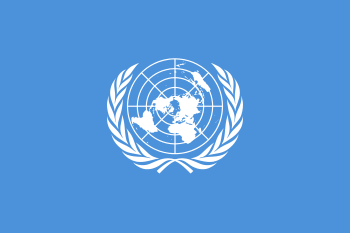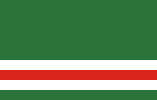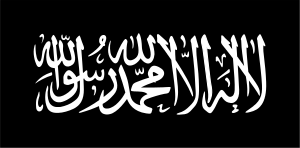Cruise missile strikes on Afghanistan and Sudan (August 1998)
| Operation Infinite Reach | |||||||
|---|---|---|---|---|---|---|---|
| Part of the Second Sudanese Civil War | |||||||
 A pharmaceutical factory in Sudan, destroyed during Operation Infinite Reach. | |||||||
| |||||||
| Belligerents | |||||||
|
|
| ||||||
| Commanders and leaders | |||||||
|
|
| ||||||
| Strength | |||||||
| Around 10 warships and 5 submarines | Unknown | ||||||
| Casualties and losses | |||||||
| None |
| ||||||
The August 1998 bombings of Afghanistan and Sudan (codenamed Operation Infinite Reach by the United States) were American cruise missile strikes on terrorist bases in Afghanistan and a pharmaceutical factory in Sudan on August 20, 1998. The attack was in retaliation for the bombings of American embassies in Kenya and Tanzania which killed 224 people (including 12 Americans) and injured 5,000 others.
Al-Shifa plant bombing and controversy
The missiles were launched from American warships in the Red Sea. Several hit the Al-Shifa pharmaceutical factory, which the United States claimed was helping Osama bin Laden, the mastermind of the embassy attacks, build chemical weapons. One man was killed and ten were wounded in Sudan by the strike.
Then United States National Security Council advisor Richard Clarke stated that intelligence existed linking Osama bin Laden to Al-Shifa's current and past operators, namely the Iraqi nerve gas experts and the National Islamic Front in Sudan.[2] The government of Sudan demanded an apology from both the Bill Clinton and George W. Bush administrations; but none has been given, since U.S. intelligence still believes the plant had ties to chemical weapons. According to testimony by William Cohen,[3] "...the U.S. intelligence community obtained physical evidence from outside the al-Shifa facility in Sudan that supported long-standing concerns regarding its potential role in Sudanese chemical weapon efforts that could be exploited by al Qaeda."[4]
Officials later acknowledged, however, that "the evidence that prompted President Clinton to order the missile strike on the Shifa plant was not as solid as first portrayed." Indeed, officials later said that there was no proof that the plant had been manufacturing or storing nerve gas, as initially suspected by the Americans, or had been linked to Osama bin Laden, who was a resident of Khartoum in the 1990s."[5]
The Al-Shifa factory was Sudan's primary source of pharmaceuticals, covering the majority of the Sudanese market. Werner Daum (Germany's ambassador to Sudan 1996–2000) wrote an article in which he estimated that the attack "probably led to tens of thousands of deaths" of Sudanese civilians.[6] The American Bureau of Intelligence and Research wrote a report in 1999 questioning the attack on the factory, suggesting that the connection to bin Laden was not accurate; James Risen reported in the New York Times:
"Now, the analysts renewed their doubts and told Assistant Secretary of State Phyllis Oakley that the C.I.A.'s evidence on which the attack was based was inadequate. Ms. Oakley asked them to double-check; perhaps there was some intelligence they had not yet seen. The answer came back quickly: There was no additional evidence. Ms. Oakley called a meeting of key aides and a consensus emerged: Contrary to what the Administration was saying, the case tying Al Shifa to Mr. bin Laden or to chemical weapons was weak."[7]
The Chairman of El Shifa Pharmaceutical Industries, who is critical of the Sudanese government, more recently told reporters, "I had inventories of every chemical and records of every employee's history. There were no such [nerve gas] chemicals being made here."[8] Sudan has since invited the U.S. to conduct chemical tests at the site for evidence to support its claim that the plant might have been a chemical weapons factory; so far, the U.S. has refused the invitation to investigate. Nevertheless, the U.S. has refused to officially apologize for the attacks.[5]
Attack on camps in Afghanistan

| “ | Interestingly, even if bin Laden had been there, it would have taken a good deal of luck to kill him. The camp facilities at Khowst are fairly extensive and cover a substantial piece of ground. | ” |
| —Michael Scheuer, CIA Station Chief[9] | ||
About 75 cruise missiles were fired by the U.S. into the Islamic Emirate of Afghanistan at four Afghan training camps:
- Al Farouq training camp
- Muawai camp run by the Pakistani Harkat-ul-Mujahideen to train militants to fight Indian troops in Kashmir[10][11]
- Training camp in the Jarawah area near Khost
- Zhawar Kili al-Badr which was directed by bin Laden, and known to be a meeting place for leaders.[12][13]
The attack was made partly in an attempt to assassinate bin Laden and other leaders.[14] After the attack, the CIA heard that bin Laden had been at Zhawar Kili al-Badr but had left some hours before the missiles hit.[15]
The earlier arrest of Mohammed Odeh on August 7 while traveling to meet with Osama, is said to have alerted bin Laden, who canceled the meeting which meant that the camps targeted by the cruise missiles were mainly empty the day of the U.S. strike.[16]
According to Pakistani journalist Ahmed Rashid, 20 Afghans, seven Pakistanis, three Yemenis, two Egyptians, one Saudi and one Turk were killed.[10] Abu Jandal later estimated that only six men had been killed in the strikes.[1] The only confirmed death in the strikes was Egyptian-Canadian Amr Hamed. Osama bin Laden jokingly told militants at the al-Jihad merger that only a few camels and chickens had died.[17]
U.S. President Bill Clinton announced the attacks in a TV address, saying the Khost camp was "one of the most active terrorist bases in the world,"[18] adding that "I want the world to understand that our actions today were not aimed against Islam" which he called "a great religion."[19]
The failure of the cruise missiles to eliminate their targets would lead to an acceleration in the American program to develop unmanned combat air vehicles.[20]
Reaction
 United Nations - Secretary-General Kofi Annan was "concerned over these developments and awaits further details."[21]
United Nations - Secretary-General Kofi Annan was "concerned over these developments and awaits further details."[21] Australia - Prime Minister John Howard said the U.S. was entitled to respond to the East African embassy bombings.[21]
Australia - Prime Minister John Howard said the U.S. was entitled to respond to the East African embassy bombings.[21] Sudan - Thousands of anti-U.S. protesters took to the streets of Khartoum.[22] The minister of information of Sudan harshly condemned the attack on Khartoum and denounced Bill Clinton as a "proven liar" with "100 girlfriends".[23] President of Sudan Omar al-Bashir led an anti-U.S. rally and warned that his country "reserves the right to respond to the American attack using all necessary measures."[21]
Sudan - Thousands of anti-U.S. protesters took to the streets of Khartoum.[22] The minister of information of Sudan harshly condemned the attack on Khartoum and denounced Bill Clinton as a "proven liar" with "100 girlfriends".[23] President of Sudan Omar al-Bashir led an anti-U.S. rally and warned that his country "reserves the right to respond to the American attack using all necessary measures."[21] United Kingdom - Prime Minister Tony Blair said he "strongly" supported the U.S. strikes.[21]
United Kingdom - Prime Minister Tony Blair said he "strongly" supported the U.S. strikes.[21] Cuba - Cuba said that "President Clinton ignored the sovereignty of Sudan and Afghanistan and launched a theatrical bombardment which overshadowed his recent sex scandal."[21]
Cuba - Cuba said that "President Clinton ignored the sovereignty of Sudan and Afghanistan and launched a theatrical bombardment which overshadowed his recent sex scandal."[21] Germany - Chancellor Helmut Kohl said his government supported U.S. strikes.[21]
Germany - Chancellor Helmut Kohl said his government supported U.S. strikes.[21] Israel - Prime Minister Benjamin Netanyahu said he "welcomes the U.S. decision to strike targets of terrorists in Sudan and Afghanistan."[21]
Israel - Prime Minister Benjamin Netanyahu said he "welcomes the U.S. decision to strike targets of terrorists in Sudan and Afghanistan."[21].svg.png) Libya - Libyan leader Muammar al-Gaddafi expressed his country's support for Sudan's efforts "in the fight against this aggression," and led an anti-U.S. rally in Tripoli.[21]
Libya - Libyan leader Muammar al-Gaddafi expressed his country's support for Sudan's efforts "in the fight against this aggression," and led an anti-U.S. rally in Tripoli.[21] Pakistan - Pakistan denounced the U.S. missile strikes as a violation of the territorial integrity of two Islamic countries.[21]
Pakistan - Pakistan denounced the U.S. missile strikes as a violation of the territorial integrity of two Islamic countries.[21] Russia - President Boris Yeltsin condemned the U.S. action as "dishonorable" and said Washington "should have carried out negotiations to the end," but his spokesman Sergei Yastrzhembsky said that "Russia and the United States are in the same boat in everything that concerns the fight against world terrorism."[21]
Russia - President Boris Yeltsin condemned the U.S. action as "dishonorable" and said Washington "should have carried out negotiations to the end," but his spokesman Sergei Yastrzhembsky said that "Russia and the United States are in the same boat in everything that concerns the fight against world terrorism."[21] South Africa - "In retaliation", a group calling itself Muslims Against Global Oppression bombed a Planet Hollywood restaurant in Cape Town, South Africa on August 25, killing two and injuring 26.[24]
South Africa - "In retaliation", a group calling itself Muslims Against Global Oppression bombed a Planet Hollywood restaurant in Cape Town, South Africa on August 25, killing two and injuring 26.[24] Chechnya - Chechen Vice-President Vakha Arsanov said that by attacking Afghanistan and Sudan the United States had launched an "undeclared World War III", threatened to attack the Americans anywhere in the world, and that Clinton had been put on the "wanted list" for his crimes against the Islamic people and would be tried according to Sharia laws.[25]
Chechnya - Chechen Vice-President Vakha Arsanov said that by attacking Afghanistan and Sudan the United States had launched an "undeclared World War III", threatened to attack the Americans anywhere in the world, and that Clinton had been put on the "wanted list" for his crimes against the Islamic people and would be tried according to Sharia laws.[25].svg.png) Iraq said it was "ready to cooperate with any Arab and international countries to confront the U.S. hostile policies."[21]
Iraq said it was "ready to cooperate with any Arab and international countries to confront the U.S. hostile policies."[21]-
 In Afghanistan the Taliban denounced the bombing as actually aimed at the Afghan people. The movement denied charges it provides a safe haven for bin Laden and insisted that the U.S. attack killed only innocent civilians.[21]
In Afghanistan the Taliban denounced the bombing as actually aimed at the Afghan people. The movement denied charges it provides a safe haven for bin Laden and insisted that the U.S. attack killed only innocent civilians.[21] -
 Osama bin Laden pledged to attack the U.S. again. Ayman al-Zawahiri made a phone call to a Newsweek reporter, stating that "The war has only just begun; the Americans should now await the answer." [26]
Osama bin Laden pledged to attack the U.S. again. Ayman al-Zawahiri made a phone call to a Newsweek reporter, stating that "The war has only just begun; the Americans should now await the answer." [26] -
 Harkat-ul-Mujahideen also threatened to retaliate, saying "The Americans and Jews should now prepare for their destruction. The self-respecting Muslims of the world ... have announced they will wage a holy war against America."[22]
Harkat-ul-Mujahideen also threatened to retaliate, saying "The Americans and Jews should now prepare for their destruction. The self-respecting Muslims of the world ... have announced they will wage a holy war against America."[22]
See also
References
- ↑ 1.0 1.1 Bergen (2006)
- ↑ Loeb, Vernon (23 January 1999). "Embassy Attacks Thwarted, U.S. Says; Official Cites Gains Against Bin Laden; Clinton Seeks $10 Billion to Fight Terrorism". The Washington Post (Washington, D.C.). p. A.02. Retrieved 27 February 2015.
- ↑ Cohen (2004)
- ↑ Cohen (2004), p. 9 (of PDF)
- ↑ 5.0 5.1 Lacey, Marc (20 October 2005). "Look at the Place! Sudan Says, 'Say Sorry,' but U.S. Won't". The New York Times. Retrieved 27 February 2015.
- ↑ Universalism and the West
- ↑ To Bomb Sudan Plant, or Not: A Year Later, Debates Rankle
- ↑ Sudan shifts from pariah to partner
- ↑ Scheuer, Michael. "Marching Towards Hell", 2008
- ↑ 10.0 10.1 Rashid, Taliban (2000), p.134
- ↑ https://fas.org/irp/world/para/hua.htm Harakat ul-Ansar (HUA)
- ↑ New York Times, August 27, 1998, p.A8
- ↑ Coll (2005), pp. 409-410
- ↑ Coll (2005), p. 410
- ↑ Coll (2005), p. 411
- ↑ Gertz, Bill, "Inside The Ring: Missing bin Laden", Washington Times, September 18, 2008, pg. B1.
- ↑ Temple-Raston, Dina. "The Jihad Next Door", 2007.
- ↑ New York Times, August 22, 1998, p.A10
- ↑ New York Times, August 21, 1998, p.A8
- ↑ "Armed Drones and the Hunt for bin Laden."
- ↑ 21.0 21.1 21.2 21.3 21.4 21.5 21.6 21.7 21.8 21.9 21.10 21.11 Muslims, Yeltsin denounce attack, CNN, August 21, 1998
- ↑ 22.0 22.1 Thousands stage anti-U.S. protest in Sudan, CNN, August 22, 1998
- ↑ New York Times August 21, 1998, p.A13
- ↑ Explosion rips through Planet Hollywood in South Africa, CNN, August 25, 1998
- ↑ Chechnya declares war on USA, PTI, Aug 23 1998
- ↑ Lawrence Wright, The Looming Tower (2005), page 323. Vintage Books: ISBN 978-1-4000-3084-2
Bibliography
- Coll, Steve (2005). Ghost wars : the secret history of the CIA, Afghanistan, and bin Laden, from the Soviet invasion to September 10, 2001 (Updated ed.). London: Penguin Books. ISBN 0-14-303466-9.
- Bergen, Peter (2006). The Osama bin Laden I Know. ISBN 9780743295925.
- Cohen, William S. (23 March 2004), Statement of William S. Cohen to The National Commission On Terrorist Attacks Upon the United States (PDF)